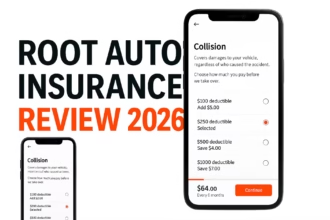Introduction

In today’s fast-paced financial landscape, Americans are constantly seeking effective ways to manage their money and reach their savings goals. One powerful tool that has gained popularity in recent years is the target savings account. But what exactly is a target savings account meaning in the USA, and how can it help you achieve your financial dreams? This comprehensive guide will explore the ins and outs of target savings accounts, their benefits, and how to make the most of them in the American financial context.
What is a Target Savings Account?
A target savings account is a specialized savings vehicle designed to help individuals save for specific goals or purchases over a set period. Unlike traditional savings accounts, target savings accounts are purpose-driven, allowing account holders to focus on particular financial objectives, such as saving for a down payment on a house, a dream vacation, or even building an emergency fund.
Key Features of Target Savings Accounts in the USA:
- Goal-Oriented Saving: Target savings accounts are structured around specific financial goals, helping savers stay focused and motivated.
- Higher Interest Rates: Many US banks offer competitive interest rates on target savings accounts to encourage long-term saving habits.
- Automated Savings: Most target savings accounts allow for automatic transfers from checking accounts, making it easier to save consistently.
- Flexible Terms: Account holders can typically choose their savings timeline and target amount based on their individual goals.
- Progress Tracking: Many US financial institutions provide tools to help savers track their progress towards their goals.
- FDIC Insurance: Like other savings accounts in the USA, target savings accounts are typically FDIC-insured up to $250,000 per depositor.
The Benefits of Target Savings Accounts for Americans
Enhanced Financial Discipline
Target savings accounts encourage a structured approach to saving, helping Americans develop better financial habits. By setting specific goals and timelines, account holders are more likely to stick to their savings plans and resist the temptation to spend unnecessarily.
Competitive Interest Rates
In the current low-interest-rate environment, many US banks offer higher rates on target savings accounts compared to traditional savings accounts. This can help savers grow their money faster and reach their goals more quickly.
Motivation and Progress Tracking
The ability to visualize progress toward a specific goal can be incredibly motivating. Many US banks provide online dashboards or mobile apps that allow savers to track their progress, providing a psychological boost and encouraging continued saving.
Separation of Funds
Target savings accounts help Americans keep their goal-specific savings separate from their everyday spending money. This separation can prevent impulsive spending and ensure that funds are available when needed for the intended purpose.
Customizable Savings Plans
Target savings accounts in the USA often offer flexibility in terms of contribution amounts and frequencies. This allows savers to tailor their savings plans to their individual financial situations and goals.
How to Choose the Right Target Savings Account in the USA
When selecting a target savings account, Americans should consider the following factors:
- Interest Rates: Compare rates offered by different banks and credit unions to maximize your earnings.
- Minimum Balance Requirements: Some accounts may require a minimum balance to earn the advertised interest rate or avoid fees.
- Fees: Look for accounts with low or no monthly maintenance fees to maximize your savings.
- Access to Funds: Consider how easily you can withdraw money if needed before reaching your goal.
- FDIC Insurance: Ensure the financial institution is FDIC-insured for peace of mind.
- Online and Mobile Banking Features: Look for accounts that offer user-friendly tools for managing and tracking your savings.
- Customer Service: Choose a bank with a reputation for excellent customer support in case you need assistance.
Popular Target Savings Account Options in the USA
Ally Bank Online Savings Account
Ally Bank offers a high-yield savings account that can be used as a target savings account. It features competitive interest rates, no monthly maintenance fees, and the ability to create multiple savings buckets for different goals within the same account.
Capital One 360 Performance Savings
This account offers a high APY with no minimum balance requirements and no monthly fees. Capital One’s mobile app allows users to set savings goals and track their progress easily.
Marcus by Goldman Sachs High-Yield Online Savings
Marcus offers a competitive interest rate and no minimum deposit requirement. While it doesn’t have a specific “target savings” feature, its high yield makes it an attractive option for goal-oriented savers.
Barclays Online Savings
Barclays provides a high-yield savings account with no minimum balance requirements and no monthly maintenance fees. Their online banking platform allows for easy goal-setting and tracking.
CIT Bank Savings Builder
This account offers tiered interest rates, with higher rates for those who maintain a certain balance or make regular monthly deposits, incentivizing consistent saving habits.
Strategies for Maximizing Your Target Savings Account
Set SMART Goals
When using a target savings account, it’s crucial to set Specific, Measurable, Achievable, Relevant, and Time-bound (SMART) goals. For example, instead of simply saying, “I want to save money,” a SMART goal would be, “I want to save $10,000 for a down payment on a house within 24 months.”
Automate Your Savings
Take advantage of automatic transfer features offered by most US banks. Set up regular transfers from your checking account to your target savings account to ensure consistent savings without having to remember to do it manually.
Use Windfall Savings
Whenever you receive unexpected money, such as a tax refund, work bonus, or gift, consider putting a portion of it into your target savings account to accelerate your progress.
Regularly Review and Adjust Your Plan
As your financial situation changes, be prepared to adjust your savings plan. Increase your contributions if you get a raise, or adjust your timeline if you encounter unexpected expenses.
Avoid Early Withdrawals
Try to resist the temptation to withdraw money from your target savings account before reaching your goal. If you must make a withdrawal, have a plan to replenish the funds as soon as possible.
Consider Multiple Accounts
If you have several savings goals, consider opening multiple target savings accounts to keep your funds separate and easily trackable.
Take Advantage of Round-Up Features
Some banks offer round-up programs that automatically transfer the difference between your purchase amount and the next dollar to your savings account. This can be an effortless way to boost your savings.
Target Savings Accounts vs. Other Savings Options
Target Savings vs. Traditional Savings Accounts
While traditional savings accounts offer flexibility, target savings accounts provide a more focused approach to saving for specific goals. They often come with higher interest rates and goal-tracking features that traditional accounts may lack.
Target Savings vs. Certificates of Deposit (CDs)
CDs typically offer higher interest rates than target savings accounts but come with penalties for early withdrawal. Target savings accounts provide more flexibility while still encouraging disciplined saving.
Target Savings vs. Money Market Accounts
Money market accounts often require higher minimum balances and may offer check-writing privileges. Target savings accounts are more focused on specific savings goals and may have lower balance requirements.
Target Savings vs. Investment Accounts
While investment accounts have the potential for higher returns, they also come with more risk. Target savings accounts offer a stable, low-risk option for short to medium-term financial goals.
The Role of Target Savings Accounts in Financial Planning
Target savings accounts can play a crucial role in a comprehensive financial plan for Americans. They can be used effectively for:
- Emergency Funds: Building a 3-6 month emergency fund is a cornerstone of financial stability.
- Major Purchases: Saving for big-ticket items like cars, home down payments, or expensive electronics.
- Life Events: Planning for weddings, births, or other significant life milestones.
- Education: Saving for college tuition or professional development courses.
- Vacations: Setting aside funds for dream trips or annual family vacations.
- Home Improvements: Saving for renovations or major home repairs.
- Retirement Supplementation: While not a replacement for dedicated retirement accounts, target savings can supplement retirement savings for specific post-retirement goals.
Case Studies: Success Stories with Target Savings Accounts
The First-Time Homebuyer
Sarah, a 28-year-old marketing professional from Chicago, used a target savings account to save for a down payment on her first home. By setting up automatic transfers of $500 per month and depositing her annual bonuses, she reached her goal of $30,000 in just over two years, allowing her to purchase her dream condo.
The Debt-Free Graduate
Mike, a recent college graduate from Texas, used a target savings account to aggressively pay off his student loans. By living frugally and dedicating 50% of his entry-level salary to his target savings account, he paid off $40,000 in student debt in just three years, becoming debt-free before his 26th birthday.
The Early Retiree
Linda, a 50-year-old teacher from Florida, used multiple target savings accounts to supplement her retirement savings. By saving for specific post-retirement goals like travel and a vacation home, she was able to retire comfortably at 60, five years earlier than she initially planned.
Challenges and Considerations
While target savings accounts offer numerous benefits, it’s important to be aware of potential challenges:
- Opportunity Cost: The money in a target savings account might earn less than if it were invested in the stock market over the long term.
- Inflation Risk: If the interest rate on the account doesn’t keep pace with inflation, the purchasing power of your savings could decrease over time.
- Temptation to Withdraw: Easy access to funds can sometimes lead to premature withdrawals, derailing savings goals.
- Limited Returns: While interest rates on target savings accounts are often higher than traditional savings accounts, they may still be relatively low compared to other investment options.
- Potential Fees: Some target savings accounts may have fees or minimum balance requirements that could eat into your savings if you’re not careful.
The Future of Target Savings Accounts in the USA
As financial technology continues to evolve, we can expect to see innovations in target savings accounts. Some potential developments include:
- AI-Powered Savings Recommendations: Banks may use artificial intelligence to analyze spending patterns and suggest personalized savings goals and strategies.
- Gamification: More financial institutions may incorporate game-like elements to make saving more engaging and rewarding.
- Integration with Budgeting Tools: Target savings accounts may become more closely integrated with comprehensive budgeting and financial planning platforms.
- Social Saving Features: Some banks may introduce social elements, allowing users to share goals and progress with friends or family for added motivation.
- Enhanced Visualization Tools: Improved graphics and virtual reality features could provide more immersive ways to visualize savings progress and goals.
Conclusion
Target savings accounts offer a powerful tool for Americans looking to achieve specific financial goals. By combining the discipline of dedicated saving with the flexibility of a traditional savings account, these products can help individuals stay focused and motivated on their financial journey. Whether you’re saving for a down payment on a house, planning a dream vacation, or building an emergency fund, a target savings account can provide the structure and incentives needed to turn your financial aspirations into reality.
As with any financial decision, it’s crucial to carefully consider your individual needs and circumstances when choosing a target savings account. Compare offers from different institutions, read the fine print, and don’t hesitate to ask questions. Remember, the best target savings account for you is one that aligns with your specific goals, offers competitive rates, and provides the features and flexibility you need to succeed.
In an era of economic uncertainty and evolving financial landscapes, the ability to set and achieve concrete savings goals is more important than ever. By leveraging the power of target savings accounts and combining them with sound financial planning and disciplined habits, you can take control of your financial future and build the life you envision.
Take the first step towards your financial goals today. Research target savings account options offered by reputable banks in your area set a meaningful savings goal, and start your journey toward financial success. Your future self will thank you for the smart decisions you make today.
FAQ Section
Q1: Are target savings accounts FDIC-insured?
Yes, target savings accounts offered by FDIC-insured banks are typically covered up to $250,000 per depositor, just like traditional savings accounts.
Q2: Can I have multiple target savings accounts?
Yes, many banks allow customers to open multiple target savings accounts for different goals. This can help you organize and track various savings objectives separately.
Q3: What happens if I don’t reach my savings goal by the target date?
The consequences depend on the specific terms of your account. In most cases, you can continue saving beyond the target date or adjust your goal. Some accounts may offer bonuses for reaching goals on time, which you might forfeit if you miss the target date.
Q4: Are there penalties for withdrawing money early from a target savings account?
Unlike Certificates of Deposit (CDs), most target savings accounts don’t have penalties for early withdrawals. However, some accounts may have minimum balance requirements or limit the number of withdrawals per month.
Q5: How do interest rates on target savings accounts compare to other savings products?
Interest rates on target savings accounts are often higher than those on traditional savings accounts but may be lower than some high-yield savings accounts or CDs. Rates can vary significantly between institutions, so it’s important to shop around.
In another related article, UNCLE Credit Union High-Yield Savings Account: A Finance Devil Guide to Market-Leading Rates





